John Hurrell – 15 August, 2012
Frankovich's static installation doesn't successfully convey the impact of her live events. You need to see and hear the performers in person to appreciate the cleverness of her ideas. The small plank on one wall slowly ascending and descending is too understated to make any palpable connection with the Jumping Man, and the portrait of George 1 that forces any hopeful viewer to enter a confined space (between the painting and gallery wall) to see it, is hardly memorable as an act of visitor manipulation.
Auckland
Alicia Frankovich, Simon Denny, Kate Newby, Sriwhana Spong
The Walters Prize 2012
4 August - 11 November 2012
This year we have come to the sixth Walters Prize, the first such biennial presentation on the top floor of the revamped AAG building, architecturally so different from the New Gallery. This time - unlike the five other somewhat disparate occasions - the design of the four finalist shows (all first exhibited overseas) looks really tight, a precisely orchestrated walk-through that looks like a curated, thematically cohesive event with its use of alternating light and dark spaces, inside walls and out.
Everything seems perfectly balanced. Two of the artists use film or video to record the activity of the human body (Frankovich to document a jumping man doing one of her performances, Spong to speculate on and reinterpret early modernist dance, using three performers), those same two artists using early modernist music (Bartok and Stravinsky), and the remaining two explicitly referencing thought as logic (Denny) or its wild twin, feeling (Newby) - as a foil. In a thematic sense the ‘body’ half of the show is balanced by the ‘mind’ half.
Moving through the sequence of exhibitions, the first you enter is that of Alicia Frankovich‘s Floor Resistance. The first section is a film of a dancer performing Jumping Man, a work also seen live in a recent Frankovich Starkwhite opening. The inexhaustible bouncing guy, pogoing and clapping his hands together, has real presence as he energetically moves amongst the audience and musicians who are preparing to perform another Frankovich work, Floor Resistance.
That work, a performance of a string quintet playing a piece by Bartok, is a treat. The music is aurally vivid in the space, especially the pizzicato, but that is beside the point. The crucial factor is the posture of the classical musicians lying on the floor playing, while reading from sheets fastened to inverted music stands. Initially prone they partially raise themselves up as the four sections develop.
Frankovich’s static installation doesn’t successfully convey the impact of her live events. You (and this year’s judge) need to see and hear the performers in person to appreciate the cleverness of her ideas. The small plank on one wall slowly ascending and descending is too understated to make any palpable connection with the Jumping Man, and the portrait of George 1 that forces any hopeful viewer to enter a confined space (between the painting and gallery wall) to see it, is hardly memorable as an act of visitor manipulation. Only the two monitors facing each other wittily connect with her Bisons work when the artist and a gallery-goer lock in a quarter scrum position and try to push each other backwards off the floor.
The second exhibition is that of Sriwhana Spong‘s Fanta Silver and Song. Her two film installations will for many people be the WP highlight, the fluid dancing, accompanied by subtle changes in filmic colour and sound, making it the most accessible work in the show. They are separated by a room of wall works, one being a silk garment dyed in hot Fanta orange, and the other two, collages of a dancer in an emaciated skeletal costume with chilling skull-like make up. Originally Spong had a sculpture of fabric covered wire hoops and jammed in filters suspended in the middle of the room, but she seems to have changed her mind - to good effect - wisely drawing on her strengths of emotional temperature.
The two film installations are inspired by Ballet Russes projects from the early 1920s, one by Matisse’s ornamental costume for Le Chant du Rossignol (it really a sort of duet that dancer Benjamin Ord creates with the physical properties of the baglike garment), the other where two dancers (Timothy Gordon and Izumi Griffiths) respond separately to Stravinsky’s music. One problem Spong (like Frankovich) has is the power of the (often loud) music, its ability to overshadow the activities of the performers. They sometimes get sidelined. And in the Auckland Art Gallery building there is no sound control. The heaving breaths of Frankovich’s Jumping Man can easily be heard in the opposite end of the exhibition in Kate Newby’s show.
Of the four presentations, Simon Denny‘s display in a single rectangular room, is the most cohesive. To some extent it is icily intellectual but spectacular with its huge photographic mural of the Mungo desert, and its nineteen lined up screen-printed monitor faces (each part sculpture, part painting, part print) - based on the width, height and depth of the original University of Sydney screens he found during his residency there. It is as if Denny’s role as an artist means taking on the role of a lecturer (much contemporary art is drearily pedagogical) particularly with the samples from the philosophy course he took placed on the screens. Despite this, the body of material - its display of paired screened canvases, the photographs of his university flat, his reflexive notices about the residency itself, various remote controls - all resolve into a unified, very satisfying presentation.
I like the detail and tightness found in Denny’s exhibition, the samples of logical (and illogical) argument, the humour of the canvas surrogates for plasma screens, and the chromatic intensity of the red, rippled Mungo Desert sands. The different elements lock in together exceptionally well, whereas in Frankovich, some parts (like a pair of explanatory Dashperesque wall labels about Bisons) seem superfluous as devised ‘artworks’, as did the suspended hoops for Spong.
Kate Newby‘s exhibition was first seen in Bremen. Here like there, Crawl Out Your Window is reliant on saturated colour and nuanced whimsy to generate a mood - with leaves, bottletops, puddles, and rocks set in its sloping blue concrete wall, a bright yellow ‘corridor’ you have to walk through to get out, and an adjacent ‘empty’ grey boxlike gallery where you can enjoy radiating natural light and a calming stillness. The colours seem to reference sunny weather and clear blue skies, exuding optimism.
Newby’s work (with a title that advocates escape, referencing Bob Dylan’s follow up single to his 1965 Like a Rolling Stone) has many internal conversations ‘bouncing round’ the space. For example, the various objects set in the concrete floor ‘chat’ to the random boot marks seen in the nearby hanging fabric curtain, the black chalk text in the carpet outside (saying ‘Feel It Forever’) flits mentally over nearby rooftops to be answered by ‘Try, Try’ painted on two rocks that have mysteriously sprouted over the slate. A plea for a new sensitivity perhaps, a life-changing emotional awareness?
In two years, for The Walters Prize #7, hopefully some the issues about the selection process that critics like the Barrs have pointed out will have been sorted. Maybe AAG will also be more sensitive in preventing terrace sculpture shows doubling up with the finalists’ submissions and creating unfair advantages. As for next time, my guess is that the emphasis could well be on the Newcall or ACFA crowd, two younger Auckland artist groups (now disbanded) and a different (more understated) sort of practice. I dream of the Walters Prize eventually changing from being exhibition fixated to that of commissioning brand new art. Such redefining would make the event much more flexible and exciting.
John Hurrell
Recent Comments
josephine jelicich
Dear Andrew, Thank you for this valid discussion, the cult of The Walters Prize is intriguing.
harry rickit
I take back my criticism of the exhibition being academic - it's more conventional and middle-brow. The artists' interviews in ...
Owen Pratt
A well rounded education.
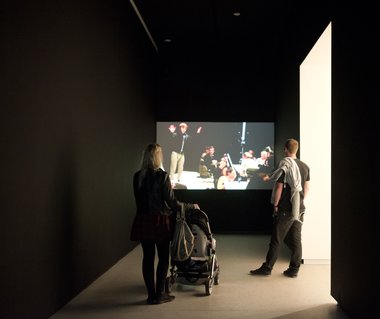
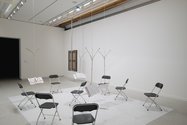
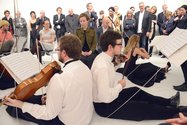
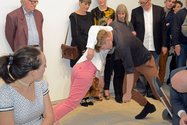
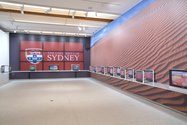

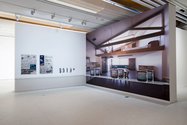
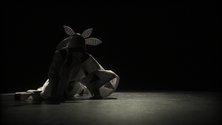
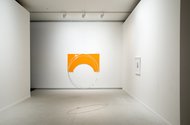
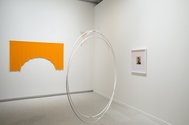
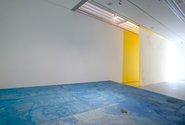
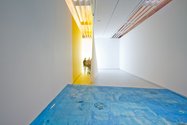

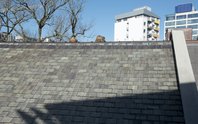
 Two Rooms presents a program of residencies and projects
Two Rooms presents a program of residencies and projects Advertising in this column
Advertising in this column



This Discussion has 29 comments.
Comment
Luke Munn, 2:58 a.m. 30 August, 2012 #
Just a short note that the 'Mungo' desert photograph as part of Denny's installation is one of the default Windows XP wallpapers, that looks like it's been digitally stretched to create more desert (http://www.tjkelly.com/windows-xp-desktop-wallpapers/). In other words it's a very familiar image to many people that for me trades on both the cliches of Australian outback, Ayers rock, etc and the very 'easy' beauty prevalent in digital wallpaper packs - meadows, sunsets, macro shots of droplets, etc.
John Hurrell, 7:21 a.m. 30 August, 2012 #
You're dead right, Luke. Very observant. And in the show's context a very 'logical' image. Makes the whole show much more conceptually tight.
Andrew Paul Wood, 8:24 p.m. 3 September, 2012 #
In his posthumously published (1960) novel Na střeše je Mendelssohn (‘Mendelssohn is on the Roof’), set in Nazi-occupied Prague, the Czech writer Jiří Weil sets a fine grotesque on the roof of Rudolfinum concert hall where two functionaries are searching among the many busts of composers for that of the Jewish Felix Mendelssohn lest it offend noted music lover and Nazi Reichsprotektor Reinhard Heydrich. Of course neither knows which bust is Mendelssohn so they decide to remove the one with the biggest nose (one of the comedic duo had been to a Nazi propaganda presentation on the subject) which turns out to be that darling of German culture Richard Wagner. In many ways the selection process for the Walters Prize increasingly reminds me of this scene. If it looks like it might resemble something on the London-Paris-Berlin-New York Menu touristique of predictable and banal contemporary cliché, disposable, low stakes conceptual and installation art (ignoring the fact that those majestic cities of Overseasia also support a diverse array of more traditional and mature practices as well), it’s in. It doesn’t matter if it truly isn’t the most interesting thing to happen in New Zealand art in the last two years, just so long as it looks like what a select elite of New Zealanders think international art should look like for fear (smell the cultural cringe) we should appear rubes.
First select your jury of four pious hipster art nuns from New Zealand’s contemporary art bureaucracy (a system largely composed of careerists and theorists with very little interest in inconsequential things like technique, vision, filthy objects like paintings, photographs and sculptures, or even rudimentary connoisseurship – they are ideas people, not eyes people) – but never from further south than Wellington because that’s where the country ends. If it looks like you might have to look to that other island, don’t be ashamed to just recycle someone based in the North Island from previous years. Obviously the South Island doesn’t exist, and if there are any complaints indicate that one or two of the jurors and/or artists were either born there, or studied there, or even worked in something art related there, and have since been redeemed by relocating, especially if they have relocated to Auckland. The Mainland Goyim are not worthy enough to see the hinder parts of the art world Yahweh.
Andrew Paul Wood, 8:25 p.m. 3 September, 2012 #
The anointed four will then ignore everything else in the country and just select from the fashionable little group of their contemporaries that they have been cultivating for their short professional lives, with echoes of Caligula appointing his horse to the Senate. Some will be so shameless as to select an exhibition they were directly involved in the production of, but that kind of brazen political self-interest seems part and parcel of the Walters these days. I mean, should someone of important office at Creative New Zealand (CNZ), New Zealand’s governmental public art funding agency, be on the panel? I think not, though it does perhaps explain why in 2012 only exhibitions by established CNZ favourites that took place overseas (increasingly where CNZ policy is going) got the gong: Simon Denny for an exhibition in Sydney, Alicia Frankovich for a performance in Berlin, Kate Newby for a show in Bremen, and Sriwhana Spong for an exhibition in Melbourne. If you’re going to fete that group, where the hell is the scintillating Dane Mitchell, the most deserving of them? I suppose it is an improvement on the last few awards, which gave the impression that nothing of significance happened in New Zealand art outside of a very small handful of dealer galleries on K Road – that’s how much Auckland Art Gallery’s permanent hosting duties queered the definition of “national” award.
Don’t get me wrong, there is nothing wrong with the work of this year’s finalists in the broader context of art per se, but the most significant in relation to New Zealand? I think not. What about Fiona Pardington, Peter Madden, Andrew McLeod, Rohan Whellans, Michael Parekowhai, and Roger Boyce? They have (admittedly in my opinion) all produced far more significant shows in that period, in my humble opinion. But no, this year it’s all kids born in the 1980s who do installations. Anthony Byrt, writing of last year’s Prospect exhibition in ArtForum magazine, described the sort of thing thus “The collective effect confirmed the current dominance of a particular – and particularly strange – New Zealand aesthetic, a kind of lo-fi, apolitical cool that often seems finicky and far too concerned with its own looks to step outside its comfort zone.” Hardly surprising that it was curated by one of this year’s jurors, though I get the impression the other three jurors might have been bullied into it by the fourth as the cuckoo flies.
Andrew Paul Wood, 8:27 p.m. 3 September, 2012 #
The selection of four overseas shows proved to be quite interesting – two in Australia and two in Germany – if only because the vast majority of New Zealanders would not have seen them unless they had known about them some time in advance, and indeed this applies to the jury as well. Art world provocateurs Jim and Mary Barr (God bless them in their bloody-mindedness) took it upon themselves to trawl Facebook pages, do the math, and came to the conclusion that none of the jurors could have seen Frankovich’s show in Berlin or Newby’s show in Bremen, and that being generously charitable one of the jurors might possibly have seen Denny’s show in Sydney, and two of the jurors must have seen Spong’s show in Melbourne, but of course one of them was already involved in the production of said exhibition so that was surely inevitable, if somewhat nepotistic. I would even go so far as to say that relatively few people would have seen Newby’s show at all. I’ve been to Bremen – it’s not exactly a major art centre, and one doesn’t just visit unless there for a reason or nearby (as I was in Oldenburg) and grew up with the Brothers Grimm. If you are going to award $50,000 dollars to someone, the least one could hope for is that you had seen in the flesh the reason you putting them in the running.
The interesting thing is that Newby’s Crawl out your window, a rather lovely and mysterious rough blue concrete ersatz floor over the top of the gallery floor (ballsy of Auckland Art Gallery I must admit given the preciousness of the recent refit of the building) and bright yellow tunnel is the one work that didn’t have me sneering up my sleeve. I thought it was lovely and far more interesting than her pothole in last year’s Prospect. I hope Newby get’s the gong.
While I’m a fan of Denny, his capitalist consumer aquariums are just boring as static screen-printed screen-grabs instead of jerry-rigged video monitors. His Walters piece Introductory logic video tutorial is nowhere near as interesting as his Berlin collaborations with Nick Austen. I used to think that elements of his work were being ironic about the whole annoying didactic and superfluous recherché hipster Miranda July-Wes Anderson-McSweeny’s-Gambia Castle pretentious and obscure twee-ness of much contemporary art as pushed by many New Zealand curators who came of age in artist run spaces of the late 1990s and early 2000s. Now I am not so sure.
Andrew Paul Wood, 8:31 p.m. 3 September, 2012 #
I had to replace "sn*g*er" with "sneer" because the software thinks I'm making racist remarks.
Owen Pratt, 8:40 p.m. 3 September, 2012 #
..and I just tried to call Peter Dornauf a cu*t and it wouldnt fukn let me.
Andrew Paul Wood, 8:29 p.m. 3 September, 2012 #
Frankovich’s inverted music stands and annoying videos (sans performance) are as hackneyed as any third-tier crap to be found in the provincial galleries of Europe and the US – especially when people like John Cage and Bruce Nauman had been doing all that sort of stuff back when Frankovich was still in nappies, if not before. You cannot be an art historian and look at it without being bored because you’ve seen it all before... Many times…. Honey, you ain’t no Vanessa Beecroft.
As for Spong, what happened? Fascinating and aesthetically satisfying explorations of identity and culture have given way to increasingly self-indulgent half-arsed little girl wish fulfilment which is impossible to take seriously. Perhaps she wishes she’s been a dancer in the Ballet Russes, but she is unable to adequately convince me that I as a viewer should care. That said, I do quite like the fluid motions and subtle filmic effects she has incorporated into the video works. No doubt Spong’s Fanta Silver and Song will prove the most accessible work for the general public because of the easily digestible videos, but that’s mainly because the audience will most probably be ignorant of the trite allusions to early modern dance and therefore unable to judge.
Andrew Paul Wood, 8:29 p.m. 3 September, 2012 #
These works simply cannot be justified as the most important works of vaguely New Zealand. It’s a joke. Then there’s the installation. Argh! In 2010 Michael Stevenson’s’s brilliant Persepolis was dropped completely from the finalists on the grounds that it was too expensive to ship in from Bristol and set up in the confined spaces of pre-facelift Auckland Art Gallery. Bizarre! Why not simply ask him to make something else? That’s what Fiona Connor did that year because her original work Something Transparent (please go round the back) was a site-specific recursive Baudrillardian facsimile of her dealer Michael Lett’s front gallery window (in the window, in the window – a fairly boring old hat concept. Pathetically the door (just the door) is currently on display in the weird contemporary-first chronological ground floor display (the labels are patronising and sometimes plain wrong – it is not appropriate to describe Theo Schoon’s origins as New Zealand and Netherlands and ignore the fact he was born in Indonesia when it was still the Dutch East Indies – but I digress) from the collection at Auckland Art Gallery – basically free advertising for Lett (his name’s on the door) but with no context. At Auckland Art Gallery’s Walters show this was translated into dummy rafters in the ceiling (dusted with sawdust as a deliberate little punctum unlikely to be noticed by many). If the jurors will insist on selecting site-specific installations and interventions, it’s patently obvious that trying to recreate them at another site in highly altered form is a nonsense.
The final part of this farcical process an overseas judge – oh the palpable cultural cringe – is invited to make the final decision. Not that they get much time to actually, you know, “judge” the work, because for the two or so days they are actually here they’re too busy being wined and cheesed in quarantined seclusion on Waiheke Island by a very select group of Auckland art elite. Any actual decision is made on the briefest of flybys, and indeed could probably have been done with emailed photographs (thus saving on the air fares – after all, if it’s good enough for the jurors...). It’s not like these judges really bring much critical insight to the event. Vicente Todolí’s comments in 2010 were generic drivel – basically he was only there for his name because he had just left his job as director of the Tate Modern. I blame Auckland’s silly celebrity culture that say the first Walters Prize opened by (for reasons unknown, but presumably because he was on the telly at the time) comedian Oscar Kightley – but then again, I suppose it takes a clown to launch a farce.
Andrew Paul Wood, 8:30 p.m. 3 September, 2012 #
What can be done to rehabilitate this shambling behemoth? I would suggest a three prong intervention. First: cut the Walters loose from Auckland Art Gallery and cycle hosting duties around the main centres – this would get rid of the taint of JAFA provincialism which surrounds the whole thing (Walters was born and raised in Wellington, and spend much of the rest of his life in Christchurch, where he died – having his name hijacked by Auckland would have come as something of a shock). Second: tighten up the selection guidelines – the original looseness was intended to open the award up to the greatest possible variety and quite plainly the opposite has happened. Three: the jurors need to come from a much more diverse range of art backgrounds in terms of age, location and profession - bring in some collectors, artists and *ahem* critics – and choose them at the time of the previous award so that they can be consciously looking over that two year period.
Obviously no one wants to talk about this. The dealers stay mum in the hope that one or more of their stable might be anointed, and the rest probably hope they might get to be a juror some day. In the confident knowledge that I am unlikely to be appointed to such a task (though I am available. Ta.) I can’t take any more of the bulls**t surrounding what is supposed to be this country’s pre-eminent art award. Art may be all together too frivolous to be taken overly seriously, but it is serious enough to warrant not being made a joke.
Owen Pratt, 9:12 p.m. 3 September, 2012 #
Thanks Andrew highly valuable insight as usual esp. bit about Heydrich.
Perhaps CNZ to fund a raspberry version of the Walters Prize... except it would be the same artists.
The last words should be left to the judges themselves with a full card of art wank.
Jurors' statement
In a two-year period marked by a multitude of compelling exhibitions and projects, the jury has settled on four bodies of work that were each seen to occupy unique and adventurous territory in New Zealand art.
Nominations were arrived at on the basis of showing strong evidence of a particular kind of searching engagement within the artists' own practice and with the conditions of the larger world beyond.
While a variety of methodological approaches are visible in the selection, this was not the intention of the jury at the outset. Rather, it was a by-product of the vitality and imaginativeness of the field in general. What does inform all of the selections is an engagement with how the discrete sculptural object is pushed beyond itself into film, installation, work in public space and performance.
The jury is firmly of the belief that each artist has, in startling ways, interrogated and pushed their practice with great rigour and dexterity to offer new meditations on the possibilities of material, form and its assorted social contexts. Ultimately, each project demonstrated a palpable influence on the art making and viewing communities from which it has arisen.
Josie McNaught, 9:54 p.m. 3 September, 2012 #
Ummm - John - we were at the same exhibition - yes?
John Hurrell, 10 p.m. 3 September, 2012 #
Andrew forgets that half the jurors were there representing the South Island (ie. Aaron and Kate). Maybe they were easily gulled by the two bad-arsed 'North Islanders' (Gwyn and David), but hypothetically they had minds of their own...and weren't sheep. Apparently they were appointed two years before the exhibition. Plenty of time to do proper research.
Andrew Paul Wood, 11:16 p.m. 3 September, 2012 #
Um, Actually John you're wrong - Kate was appointed to CNZ in 2011 and joined City Gallery Wellington in 2010. Aaron is from New Plymouth, and unsurprisingly is a graduate of the University of Auckland where he developed and formed the tastes he brought with him to the DPAG in 2008. You are correct that he was South Island-based during the selection period, but he was the only one of the four that was.
I'm surprised you didn't point out that Gwyn once upon a time worked at the DPAG and worked as the publications editor for The Physics Room - it would have been an easy point to you, however that only goes to underline the spurious way the juror selections are rationalised and my comments to that effect.
Neither could one accuse such a jury as being all that diverse in their views - Aaron is the only one of them who could be demonstrably shown to have any interest outside of performance/installation, largely because of the excellent example of his father the late great painter Tom Kreisler.
Andrew Paul Wood, 11:20 p.m. 3 September, 2012 #
Incidentally, when does one fit in time to do proper research when one is curating major shows of one's own full time at one's own institution?
And while they may not be sheep, they are all very much a closely connected group in the artists they have chosen to champion at their institutions over the years.
John Hurrell, 11:43 p.m. 3 September, 2012 #
Well I heard Chris Saines say Kate was first approached when she was at The Physics Room. The breakdown was based on the jurors' working positions at the time, not their personal origins.
I do agree with you that AAG seems pretty disorganised (the juror selection has a history of Auckland cronyism, lots of incestuous repeats) but then the entire history of TWP's premises (eg...is it artist-based or exhibition-based? / Is it for experienced artists or recent graduates?) slides around without a conceptual anchor. However the whole package is based on their relationship with patrons like Jenny Gibbs so it's their party, they can do what they like. No way will it ever rotate from city to city...unless CNZ insist, and as I don't think they contribute any dosh, I doubt they have any leverage.
Andrew Paul Wood, 12:34 a.m. 4 September, 2012 #
Which is interesting because few finalists over the years seem to bear much relationship to what I know of the broader interests of Jenny Gibbs and the other patrons. I can only hope that said patrons might get bored with it and take it on the road, or hand over the reins completely to CNZ.
John Hurrell, 9:55 a.m. 4 September, 2012 #
I doubt it. It is an AAG event and most people overall are v. happy with the event. It's not CNZ's business to interfere.
Andrew Paul Wood, 5:38 p.m. 4 September, 2012 #
And I claim the right to call AAG's claim that the Walters is a national award mendacious casuistry, especially when compared to the sterling work of the Arts Foundation. I don't think I would be so annoyed about it if they weren't doing such a cack-arse job of it.
Owen Pratt, 9:05 a.m. 5 September, 2012 #
'mendacious casuistry' that should sting when they find out what it means.
Reflecting on the jury's lack of physical sighting of the work, in the case of this type of 'indiscreet sculptural practice' I don't think it is really necessary, perhaps even poetical. The documentation and kudos received is more than enough to warrant selection for this award.
How would we feel if the jury was junketed around the world to inspect all overseas exhibitions? Pretty jealous I reckon. How about limiting TWP to exhibitions held on Karangahape Rd in the prior two years?
Roger Boyce, 1:20 p.m. 5 September, 2012 #
"Mendacious casuistry", although purposefully hyperbolic, makes literal, perfect sense.
However, the meaning of 'indiscreet sculptural practice' escapes me. Indiscreet??
And the idea that actually viewing an installation or performance isn't " - really necessary, perhaps even poetical." flees reason.
It also strikes me that relying on " - documentation and kudos - " to asses a work of art would be akin to relying on a film review or criticism for one's primary experience. Which has all the appeal of 'virtual' sexual intercourse.
Owen Pratt, 7:51 p.m. 5 September, 2012 #
"Mendacious casuistry", although purposefully hyperbolic, makes literal, perfect sense.
Does it? or is it tautological or merely contains redundancy?
" 'indiscreet sculptural practice' " as opposed to discreet sculptural practice contained in the jury statement above.
The flight of reason in allowing the jury leave to not see the work is contained in the artists under scrutiny to engineer the situation where that is acceptable, as is the case here.
The virtual nature of TWP is holistic and therefore poetical.
Roger Boyce, 11:55 p.m. 5 September, 2012 #
I don't normally indulge in grammar schoolmarm-ism but, in the case of mirth inducing malapropisms, I'll make an exception.
it's discrete d-i-s-c-r-e-t-e, Sunny Jim.
As 'authoritatively' "contained in the jury statement above."
D-i-s-c-r-e-e-t, as maladroitly employed by you, and as defined by any dictionary, doesn't make a lick of sense. But does make for a chuckle at your expense.
On the other hand, your content-free and grammatically tortuous " - allowing the jury leave to not see the work is contained in the artists under scrutiny to engineer the situation where that is acceptable, as is the case here." hurts too much to,laugh.
And just when I begin to think yours is a sympathy eliciting case of mild dyslexia, you up the ante by concluding with the aphasia conjuring - "The virtual nature of TWP is holistic and therefore poetical."
At which point I remember that it's considered poor form to torment the handicapped.
"From where the sun now stands, I will fight no more forever."said Chief Joseph
harry rickit, 4:01 p.m. 5 October, 2012 #
Great photos on this site. The selected Walters Prize contestants look very academically inclined. Not feeling it.
Owen Pratt, 11:14 p.m. 5 October, 2012 #
'academically inclined', to what degree?
Roger Boyce, 12:20 p.m. 7 October, 2012 #
"To what degree" ?
360 degrees....as in the mythically self-consuming Worm Ouroboros.
Owen Pratt, 10:35 p.m. 8 October, 2012 #
A well rounded education.
harry rickit, 4:11 p.m. 17 October, 2012 #
I take back my criticism of the exhibition being academic - it's more conventional and middle-brow. The artists' interviews in mass media provide more context than viewing the works in person. In year's past at least one of the selected works has been delightful (Todd, et. al. and others), this time round, no fun.
josephine jelicich, 11:33 p.m. 17 October, 2012 #
Dear Andrew,
Thank you for this valid discussion,
the cult of The Walters Prize is intriguing.
Participate
Register to Participate.
Sign in
Sign in to an existing account.